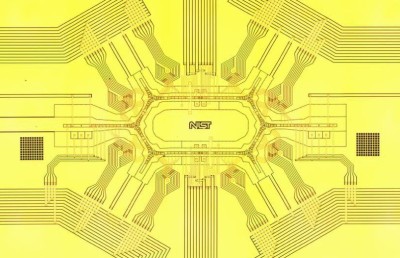Research
My current research interests lie at the boundary of pure and applied research: developing the experimental methods and technology that will take quantum information processing (QIP) from the realm of basic algorithms to the level of performing useful calculations and simulations. My research uses sets of atomic ions trapped in specialized, microfabricated rf-Paul traps. Combined with laser cooling and laser state manipulation (as well as newer techniques), atomic- ion based quantum-bits have proven to be one of the most promising systems for QIP applications.

